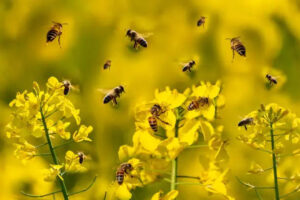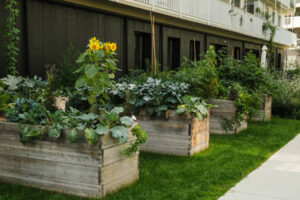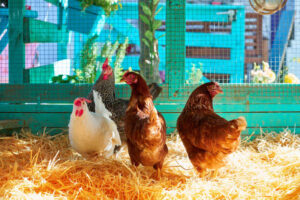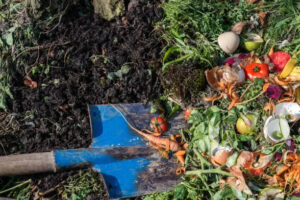Grapes are a versatile and rewarding crop that can be grown in various climates and regions. Whether you’re looking to produce table grapes, raisins, or wine, growing your own grapevines can be a fulfilling endeavor. This guide will walk you through the essential steps and considerations for successfully growing grapes.
Selecting the Right Grape Variety

The first step in growing grapes is choosing the right variety for your region and purpose. There are three main types of grapes:
- Table Grapes: These are typically larger, seedless varieties that are sweet and eaten fresh.
- Wine Grapes: These smaller, seeded varieties are used for winemaking and have a higher sugar content.
- Raisin Grapes: These grapes are dried to make raisins and often come from varieties like Thompson Seedless.
Research local climate conditions and consult with local nurseries or agricultural extensions to find varieties best suited for your area. Growing grapes in Alabama can be quite rewarding, as the state’s warm climate and diverse soil types are well-suited for several grape varieties.
Here are some grape varieties that grow particularly well in Alabama:
Muscadine Grapes
Muscadine grapes are native to the southeastern United States and thrive in Alabama’s climate. They are known for their thick skins and sweet-tart flavor. Popular varieties include:
- Scuppernong: A bronze variety with a sweet, musky flavor.
- Noble: A dark purple variety, often used for juice and wine.
- Carlos: A bronze variety that is commonly used for wine and jelly.
American Bunch Grapes
Some American bunch grape varieties can also do well in Alabama, especially those that are disease-resistant and can handle the humidity. Examples include:
- Concord: Known for its sweet flavor, this variety is often used for juice, jelly, and fresh eating.
- Niagara: A white grape variety with a sweet, slightly foxy flavor, commonly used for juice and fresh consumption.
- Catawba: A pinkish-red grape used for wine, juice, and fresh eating.
Hybrid Grapes
Hybrids are created to combine the best traits of different grape species, such as disease resistance and high yield. Some hybrids that perform well in Alabama include:
- Chambourcin: A red wine grape known for its versatility and disease resistance.
- Vidal Blanc: A white wine grape that produces high-quality wines and is known for its cold hardiness and disease resistance.
Preparing the Site & Planting the Grapevines

Grapes thrive in well-drained soil with a pH between 5.5 and 7.0. Select a sunny location, as grapevines require at least six to eight hours of sunlight per day. Prepare the soil by removing weeds, rocks, and debris. Incorporate organic matter, such as compost, to improve soil fertility and drainage.
Plant grapevines in early spring or late winter. Space the plants about 6 to 10 feet apart, depending on the variety and desired trellis system. Dig a hole large enough to accommodate the root system, and plant the vine at the same depth it was growing in the nursery. Water thoroughly after planting.
Building a Trellis System

Grapevines need support as they grow, so building a trellis system is crucial. There are several types of trellis systems, including:
- Two-Wire Vertical Trellis: Suitable for smaller vineyards, it involves two parallel wires at different heights.
- Geneva Double Curtain: Ideal for vigorous varieties, this system uses two sets of wires to create a divided canopy.
- High Wire Cordon: Commonly used in commercial vineyards, this system supports the vine with a single high wire.
Choose the system that best fits your space and grape variety.
Pruning and Training

Proper pruning and training are essential for healthy grapevines and optimal fruit production. During the first year, focus on establishing a strong trunk and root system. Prune back all but the strongest cane and train it to the trellis.
In subsequent years, prune annually during the dormant season (late winter) to remove dead or weak wood and maintain the desired shape. Leave a few healthy canes with several buds each, as these will produce fruit.
Watering and Fertilizing

Grapevines need regular watering, especially during dry spells. Water deeply and infrequently to encourage deep root growth. Avoid overwatering, as this can lead to root rot and other diseases.
Fertilize grapevines in early spring with a balanced fertilizer. Avoid excessive nitrogen, as this can promote leafy growth at the expense of fruit production. Organic options like compost and well-rotted manure are also beneficial.
Pest and Disease Management

Grapevines are susceptible to various pests and diseases, including:
- Powdery Mildew: A fungal disease that causes a white powdery coating on leaves and fruit.
- Downy Mildew: Another fungal disease that causes yellowish spots on leaves.
- Grape Berry Moth: A pest that can damage grape clusters.
Regularly inspect your vines for signs of pests and diseases. Implement integrated pest management (IPM) practices, such as proper spacing for air circulation, removing infected plant parts, and using organic or chemical treatments as necessary.
Harvesting

Grapes are typically harvested in late summer to early fall, depending on the variety and climate. Monitor the sugar content and flavor of the grapes to determine the best time for harvest. Grapes do not continue to ripen after being picked, so ensure they are fully ripe before harvesting.
Use sharp pruning shears to cut the grape clusters from the vine. Handle the grapes gently to avoid bruising and store them in a cool, dry place.
Growing grapes can be a rewarding experience that provides fresh fruit for your table, homemade wine, or dried raisins. By selecting the right variety, preparing the site, building a trellis system, and following proper care practices, you can enjoy a bountiful harvest of delicious grapes. Happy growing!









